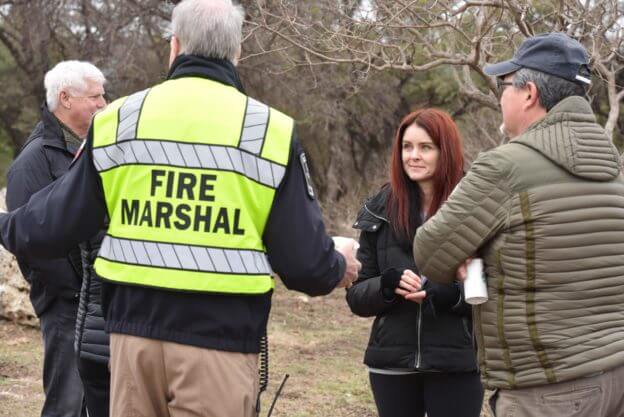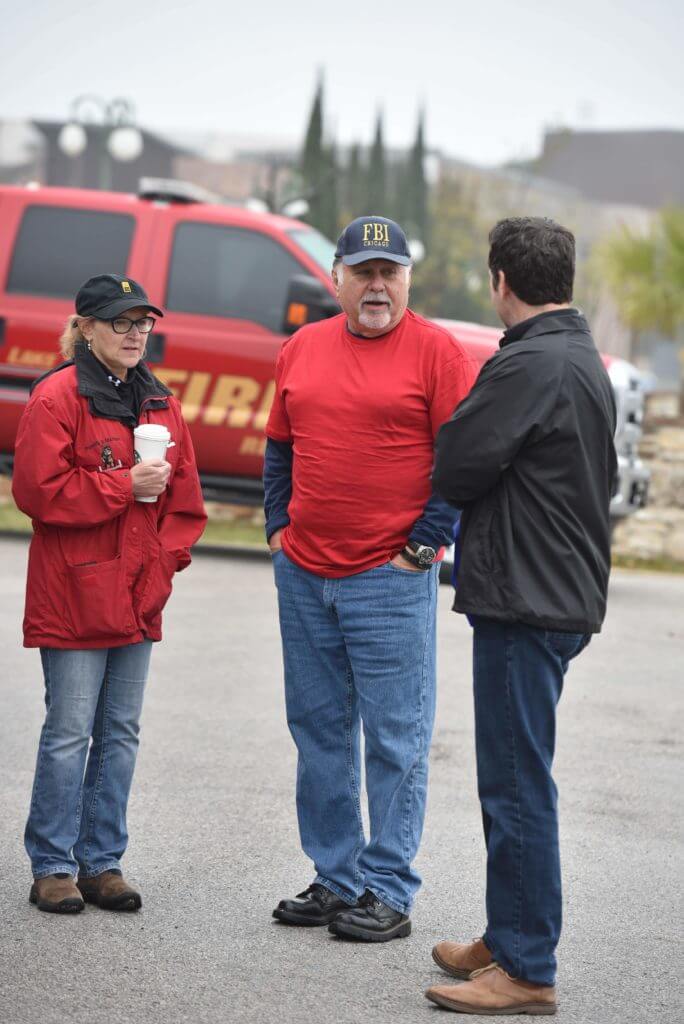 By JILL AMENT, Texas Standard
By JILL AMENT, Texas Standard
Comanche Trail, like other communities in Four Points, is surrounded by vegetation like cedar trees, which become flammable during dry spells. The neighborhood is also close to a couple of popular lakeside parks where the risk for recreational fires going wrong is high.
“We only have one way in and out if you want to get to the main streets. So, we’ve all kind of wondered forever, ‘What if?’” said resident Gary Maddox.
Another resident, Tom Hollingshead, also has been wondering. “I’m on the top of a hill, so I worry about a fire starting at the bottom,” he said.
So community leaders started working on a plan on how to evacuate if a wildfire starts. After a year-long process to get wildfire preparedness plan in motion, the Comanche Trail Community Association hosted a first-of-its-kind fire drill on the cold, wet morning of March 2.
Will Boettner is a fire education outreach coordinator for the Travis County Fire Marshal’s Office, and he spoke at the drill.
“The Comanche Trail community (has) a relatively high risk of wildfire danger,” Boettner said. “And one of the things the community has done is make a plan for developing an evacuation effort. And what we’re doing today is a practice evacuation.”
Boettner said this drill is the first of its kind in Texas.
“Given how many wildfires we’ve had in the country in the past 10 years, there are very few communities that have actually done any evacuation planning,” Boettner said.
Fire Drill
The practice evacuation included several steps. Residents were encouraged to prepare “go-bags” things they absolutely need to take with them in the case of an emergency.
Resident Debbie McCasland prepared the night before. “We talked about getting ready – what would we need? Our medications? Our pets? You have that conversation.”
The drill kicked off with a text alert sent out to residents from the Comanche Trail Community Association. Boettner gets the text a little after 9 a.m.
“We just got the first alert,” Boettner said. “Smoke observed north of Hippie Hollow. Stay aware. More info coming. Be prepared for further action. This is only a drill.”
The community association’s president, Pete Martinez sends out another text fifteen minutes later.
“This is only a drill. 9:15. Wildfire now threatening our community. Spreading towards homes. Evacuate to Oasis parking lot now. This is only a drill,” Martinez said as he reads the text.
Cars begin to trickle out of the Comanche Trail neighborhood onto the only road that leads out. Law enforcement officers line the road, directing drivers out of the community. They are told to go to the parking lot around Oasis Texas, a mile or two away from their homes.
After twenty or so cars go through, those running the drill add a challenge. The rest of the drivers are told to turn around and go the opposite direction, to a lakeside park where the road dead-ends. They’re are told to shelter in place there.
Impacts on other communities
“It’s organized, actually – really organized. A year and a half of planning has really proved well,” said Randy Jameson, who lives in River Place.
Jameson was tagging along with first responders to see how the drill unfolds. He wants to plan an evacuation drill for River Place, and for Steiner Ranch, which in September 2011, during one of the state’s worst wildfire seasons, a wildfire destroyed 23 homes.
“We in River Place stood and watched the smoke and the flames coming towards us from Steiner Ranch,” Jameson said.
Like Comanche Trail, Steiner has limited exits and that resulted in a long and chaotic evacuation during the 2011 wildfire. Other factors came into play during Steiner’s emergency including the entire community was evacuated (the latest wisdom would shelter in place many parts of the community) and the two exits unloaded on RM 620, which was bumper to bumper, congested for hours. (If that fire happened today, emergency officials would direct traffic differently including blocking roads and working with contraflow.)
Jameson said eight years later, he’s concerned these communities still aren’t prepared.
“It’s now 2019, and trying to get interest, to get residents to be interested and to protect themselves in the event of wildfire, that’s one of our biggest challenges,” Jameson said. But he hopes “it will be done.”
Drill deemed a success
At the end of the practice evacuation, the mood is light and celebratory.
“I’m incredibly excited. I feel like I’m at a birth or something,” said Brigid Shea, a Travis County commissioner who’s worked with the Comanche Trail community to organize the drill. “I’m so proud of all the work everybody’s put in. I’m hopeful about what we’ll learn from it.”
For community leaders like Martinez, the drill was a long time in the making.
“I’m extremely proud of my community,” Martinez said. “We’ve tried to do what we did today for the past 20 years. It’s just a lot of work… and fortunately we were able to convince people it was important enough to do it.”
Another resident, Donna Ackman, also said the drill was helpful.
“I think my husband said if anybody’s ready for a wildfire, we’re as close [to] ready as we can be, which is a horrible thing. But you know, we all feel like we’re a little better prepared,” Ackman said.
Organizers of the drill say they’re gathering data from the mock evacuation to share with leaders of other neighborhoods. Ultimately, they hope to provide a how-to guide for communities across the state, and the country, that want to organize their own wildfire evacuation drills.
Texas Standard aired and posted this article “How A Central Texas Community Is Preparing For Wildfires Before An Emergency Happens” on March 7. For more information on stories from around Texas, go to www.texasstandard.org
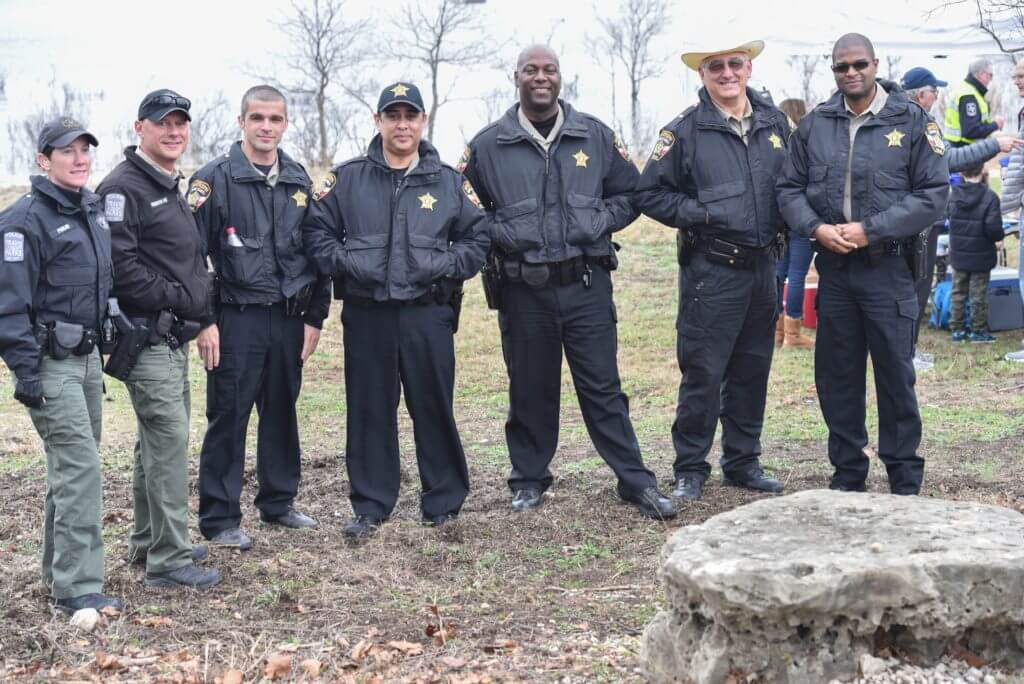
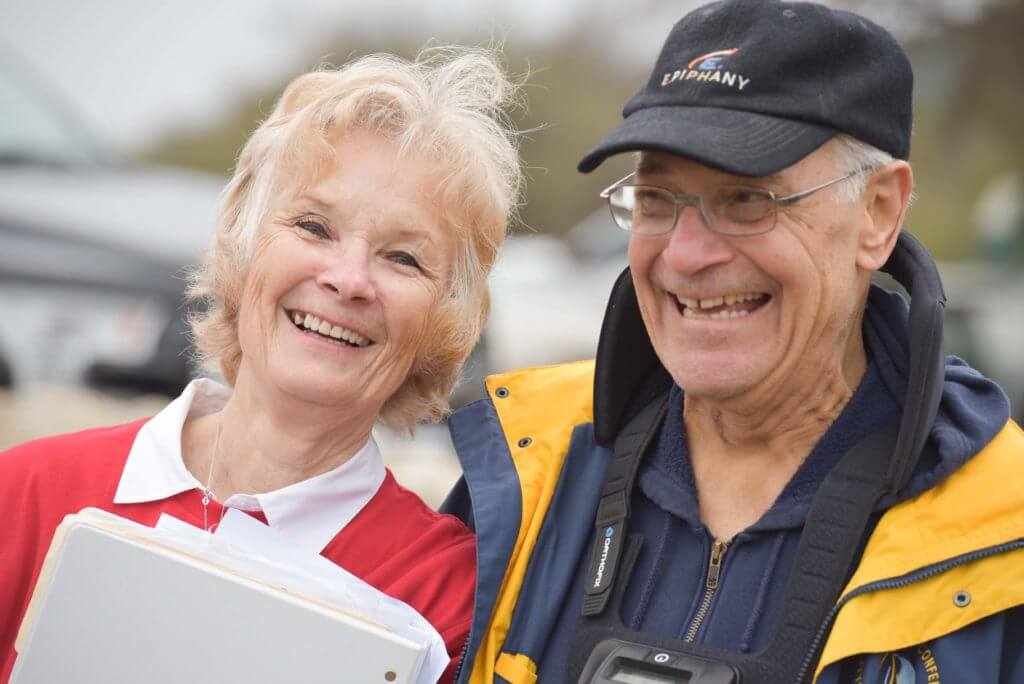
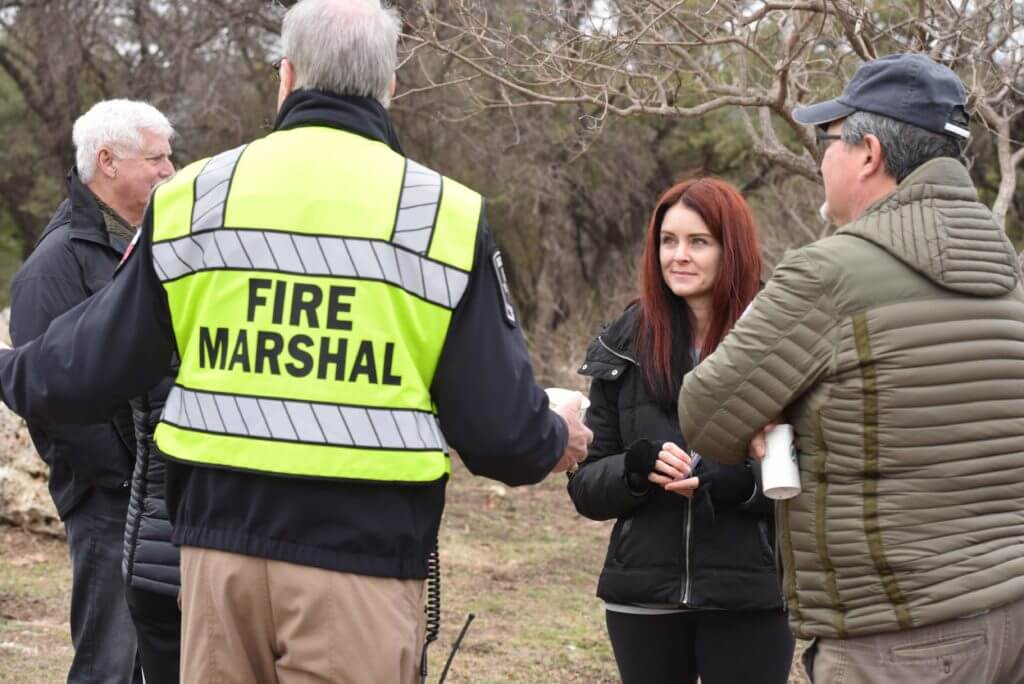
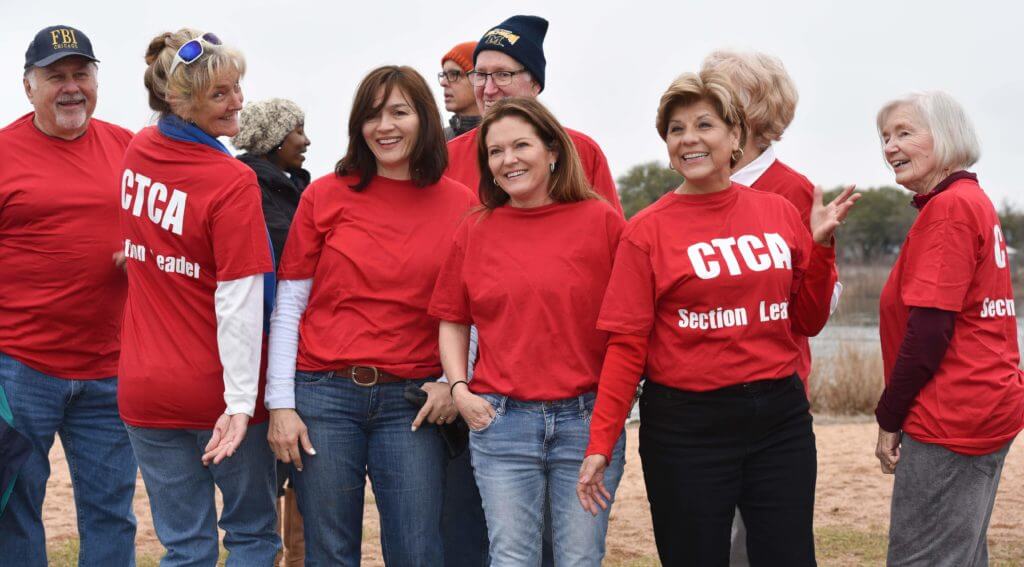
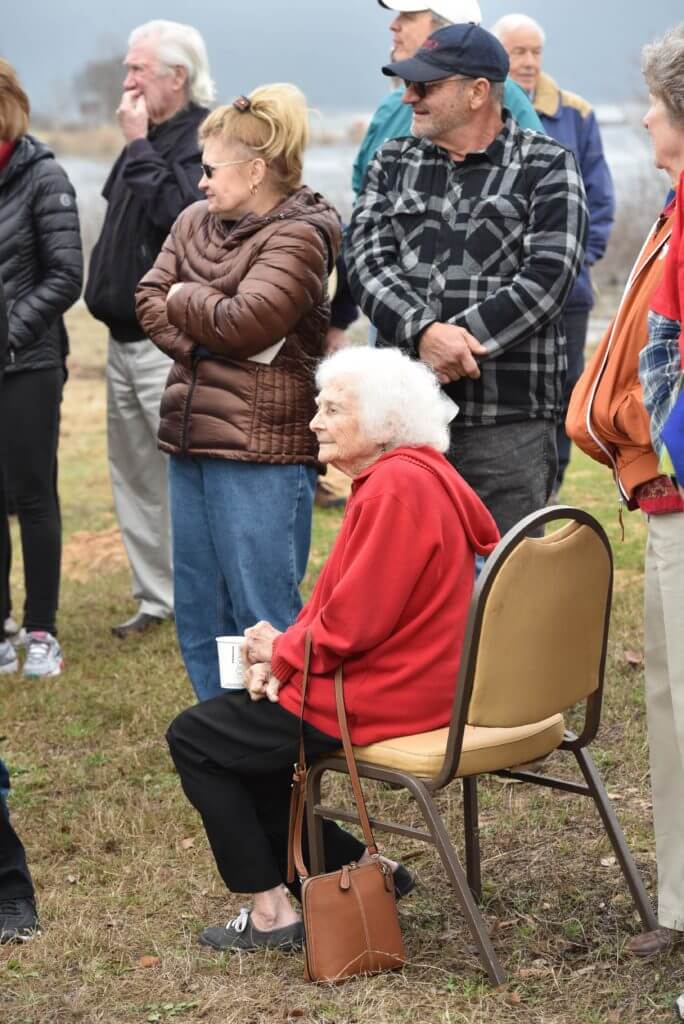
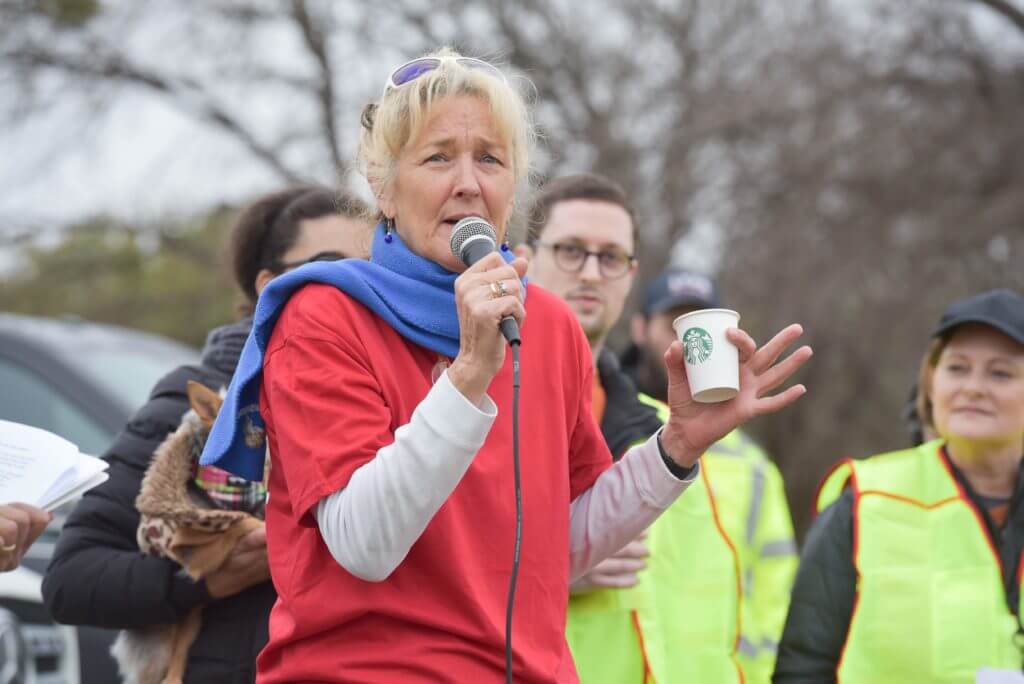
Photos by April Greear
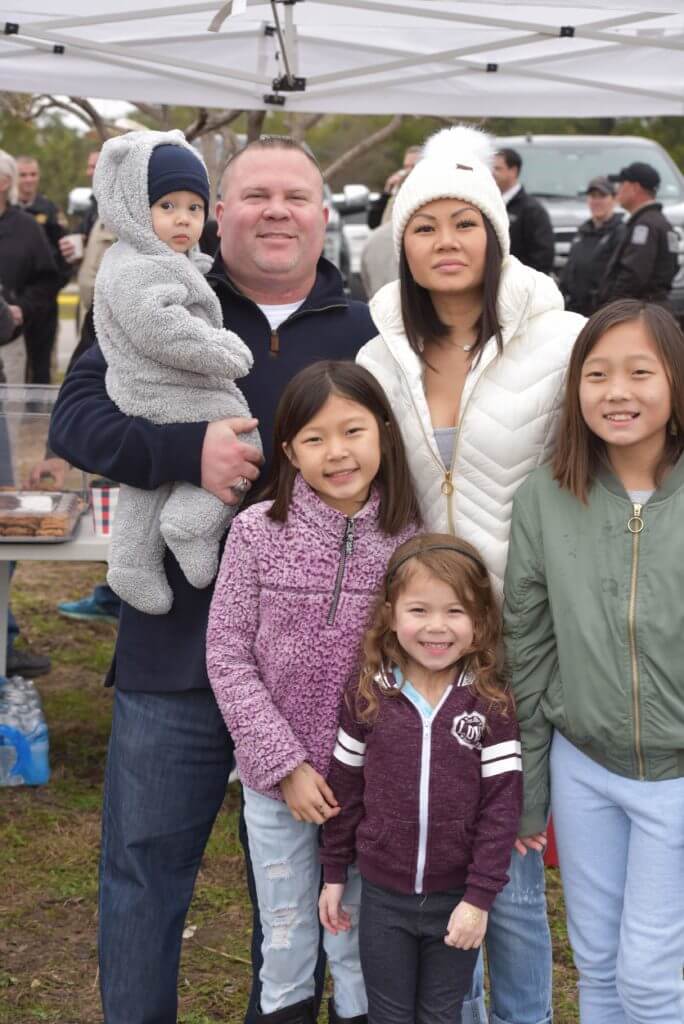
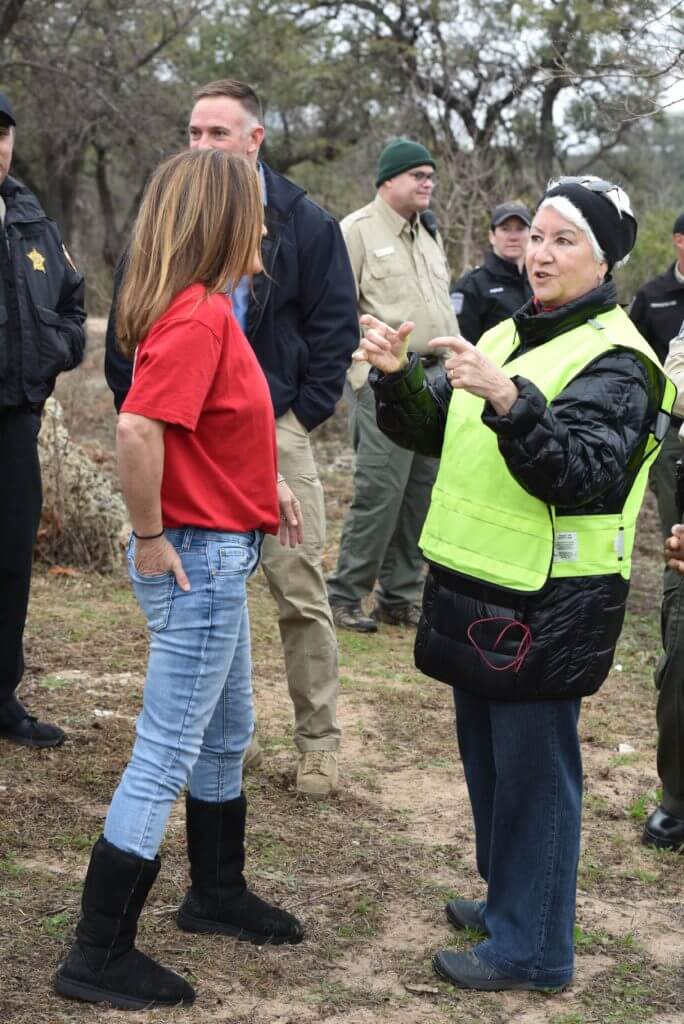
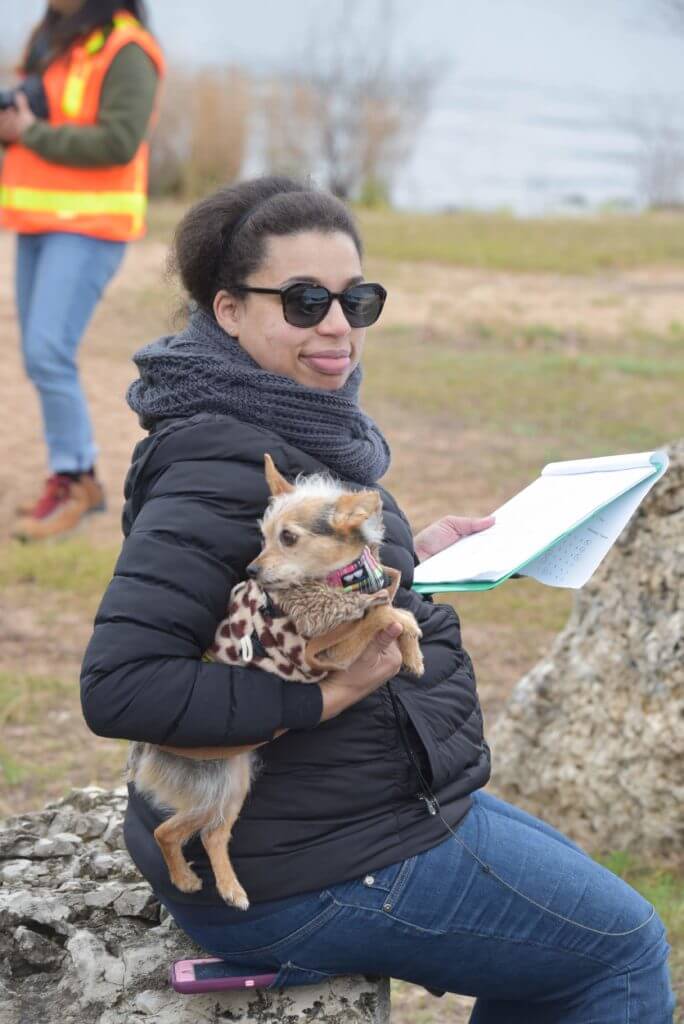
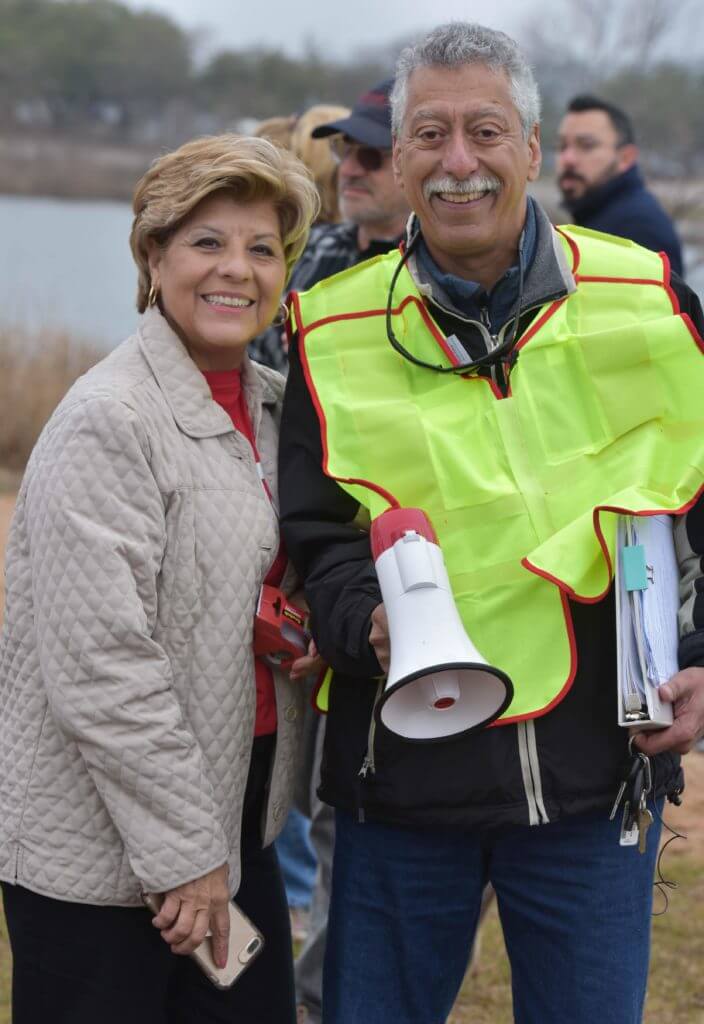
Pete Martinez Jr. organized the Comanche Trail Community Association fire drill with local government officials, law enforcement and firefighters. Martinez and his wife, Dora, have lived in Comanche Trail for six years. “We were looking for a beautiful place to provide positive experiences for our grandchildren,” he said. “One that provided quick access to fishing and swimming. My wife liked Houston. I liked the mountains of New Mexico. This was a wonderful compromise.”

